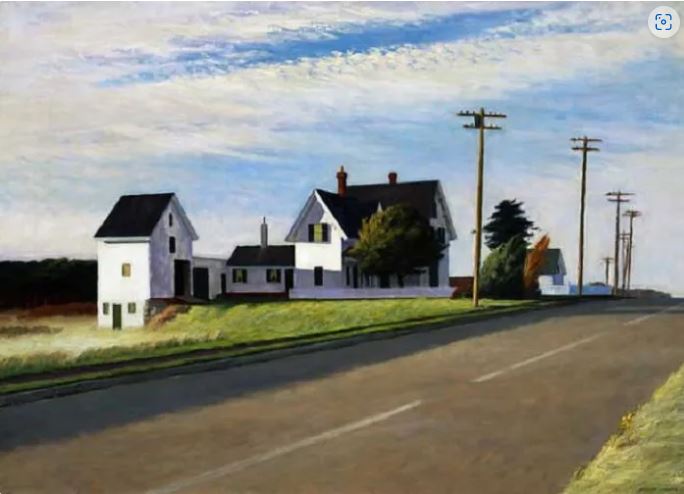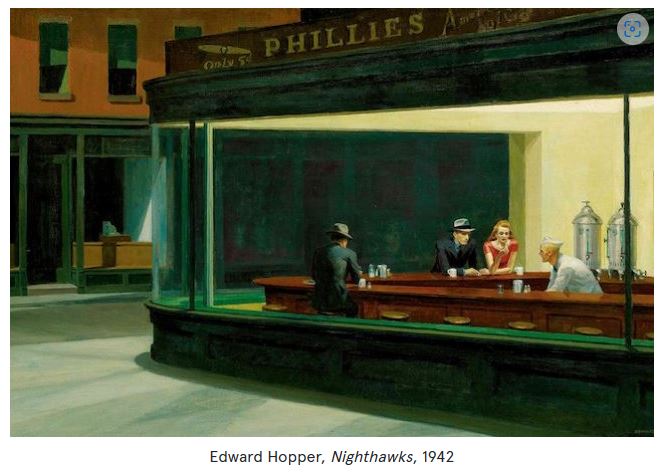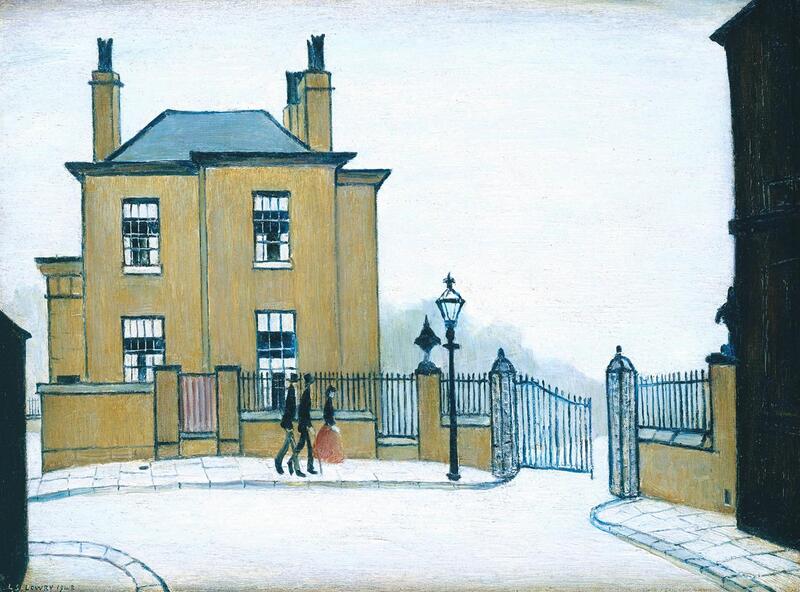|
#peterdavis #peterdavisartist #edwardhopper #lowry #JamesPatchellChettle  In his introduction, Peter described himself as a social realist artist who captures the modern day. He also introduced the term 'zeitgeist' which was an unfamiliar term to some of our members. He explained that it meant capturing the spirit of a time or in his case painting the characteristics of a period in time. In his first talk he introduced us to Edward Hopper, one of his heroes and greatest influences. Hopper was born at a time of shift from rural life to towns, where people were working in factories and steel production was cheaper and more effective. This was the start of a building boom in the cities. He moved to New York and as the city changed, cars became affordable to middle classes and railways connected towns and roads were being built. These changes had an impact on several of his paintings such as 'House By Railroad' which incidentally was thought to inspire the film Psycho. Paintings such as 'Route 6 Eastham' with its stark shadows and 'Gas' where the pumps have been made bigger emphasizing the robotic feel to the scene, capture the changing times. It was interesting to hear about Hopper's detailed research and sketches as he worked out the composition, including adding the tea urns seen in a nearby café. Moving on, Peter talked about his own work and how it relates to modern life in the city and technology. He likes to include posters and graffiti capturing the dereliction of old buildings that are often being replaced with soulless blocks. The theme of isolation, as seen in Hoppers work, is also present. Capturing todays' figures, his paintings often include phones or other aspects of technology that influence our everyday lives. After the coffee break, he moved on to introducing aspects of MAFA; The Manchester Academy of Fine Arts, a group of which he is the archivist. Here he talked about how it originated and the strong influence of James Chettle in ensuring the growth of the society. In 1935, it was due to Chettle's involvement that L S Lowry was invited to join the society and started to exhibit with them. Although Chettle and Lowry were contemporaries, often painting similar scenes, the unique quality of Lowry's style has made him famous. Chettle has largely been forgotten, although his influence on the early art scene, especially in the north west, was very important.
An interesting talk by Peter and we all had a deeper understanding of the meaning of Zeitgeist and links from other artists that had encompassed this theme.
1 Comment
|
Categories |








 RSS Feed
RSS Feed